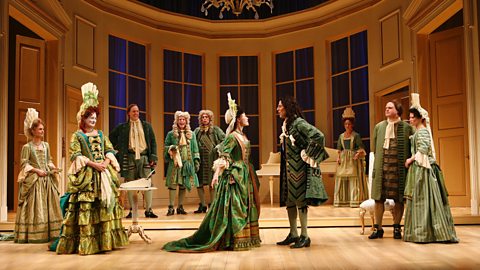Social, cultural and historical context
When exploring or performing a play, it is important that its contextThe factors surrounding a text that help us to understand it; the background events that help to explain something. is understood, including when and where the play was written and when and where it is set. Context is usually divided into three categories:
- social - the way people lived and what they believed when the play was written and set
- cultural - the arts and popular interests associated with a particular time and place
- historical - what was happening in the world when the play was written and set
When rehearsing or studying a play, the context will inform a range of artistic decisions. For example, the historical context of a play will influence design decisions. A play that is set in the Georgian era will use costumes and set associated with that period in history.

The social context may impact character relationships and how actors use their performance skills to interpret their characters.
Sometimes, directors choose to move away from a play’s original context and set it in a different period in time or a different part of the world. For example, a play may have been written hundreds of years ago but may contain themeCentral, unifying idea(s) that run through a text. or issues that are still prominent today, and staging the play in a different context can highlight the relevance of the play to a modern audience.